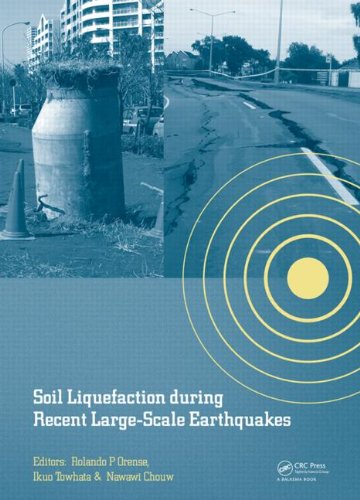

Most ebook files are in PDF format, so you can easily read them using various software such as Foxit Reader or directly on the Google Chrome browser.
Some ebook files are released by publishers in other formats such as .awz, .mobi, .epub, .fb2, etc. You may need to install specific software to read these formats on mobile/PC, such as Calibre.
Please read the tutorial at this link: https://ebookbell.com/faq
We offer FREE conversion to the popular formats you request; however, this may take some time. Therefore, right after payment, please email us, and we will try to provide the service as quickly as possible.
For some exceptional file formats or broken links (if any), please refrain from opening any disputes. Instead, email us first, and we will try to assist within a maximum of 6 hours.
EbookBell Team

4.8
94 reviewsSoil Liquefaction during Recent Large-Scale Earthquakes contains selected papers presented at the New Zealand – Japan Workshop on Soil Liquefaction during Recent Large-Scale Earthquakes (Auckland, New Zealand, 2-3 December 2013).
The 2010-2011 Canterbury earthquakes in New Zealand and the 2011 off the Pacific Coast of Tohoku Earthquake in Japan have caused significant damage to many residential houses due to varying degrees of soil liquefaction over a very wide extent of urban areas unseen in past destructive earthquakes. While soil liquefaction occurred in naturally-sedimented soil formations in Christchurch, most of the areas which liquefied in Tokyo Bay area were reclaimed soil and artificial fill deposits, thus providing researchers with a wide range of soil deposits to characterize soil and site response to large-scale earthquake shaking.
Although these earthquakes in New Zealand and Japan caused extensive damage to life and property, they also serve as an opportunity to understand better the response of soil and building foundations to such large-scale earthquake shaking. With the wealth of information obtained in the aftermath of both earthquakes, information-sharing and knowledge-exchange are vital in arriving at liquefaction-proof urban areas in both countries. Data regarding the observed damage to residential houses as well as the lessons learnt are essential for the rebuilding efforts in the coming years and in mitigating buildings located in regions with high liquefaction potential.
As part of the MBIE-JSPS collaborative research programme, the Geomechanics Group of the University of Auckland and the Geotechnical Engineering Laboratory of the University of Tokyo co-hosted the workshop to bring together researchers to review the findings and observations from recent large-scale earthquakes related to soil liquefaction and discuss possible measures to mitigate future damage.
Soil Liquefaction during Recent Large-Scale Earthquakes will be of great interest to researchers, academics, industry practitioners and other professionals involved in Earthquake Geotechnical Engineering, Foundation Engineering, Earthquake Engineering and Structural Dynamics.